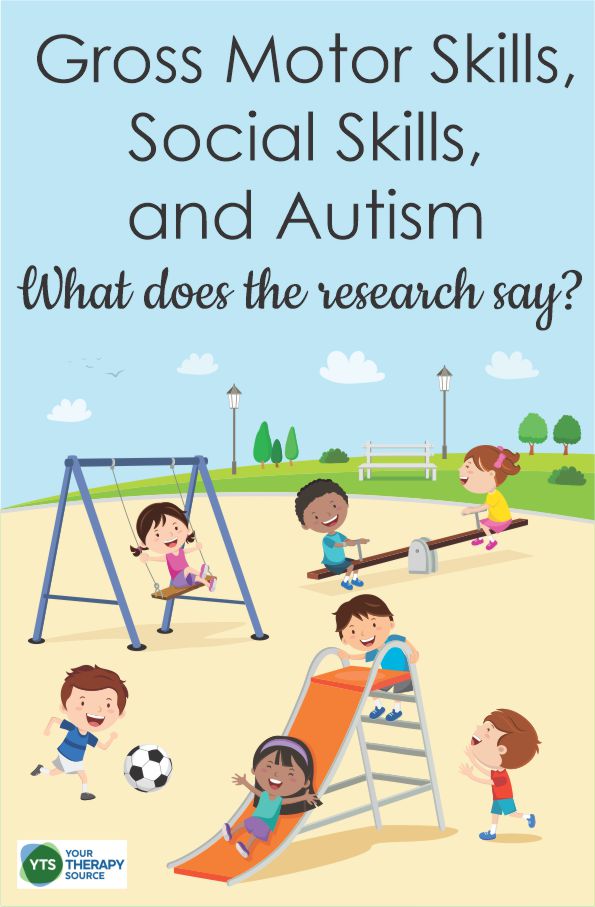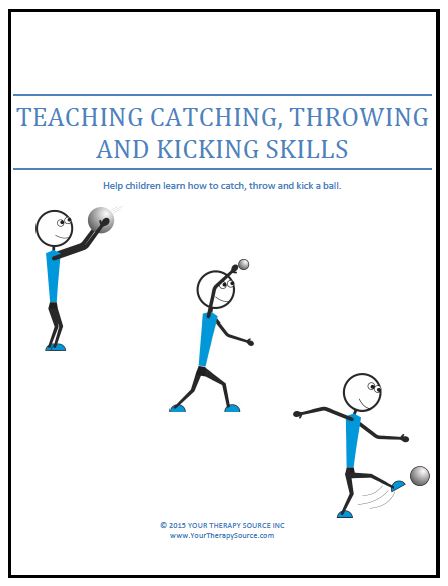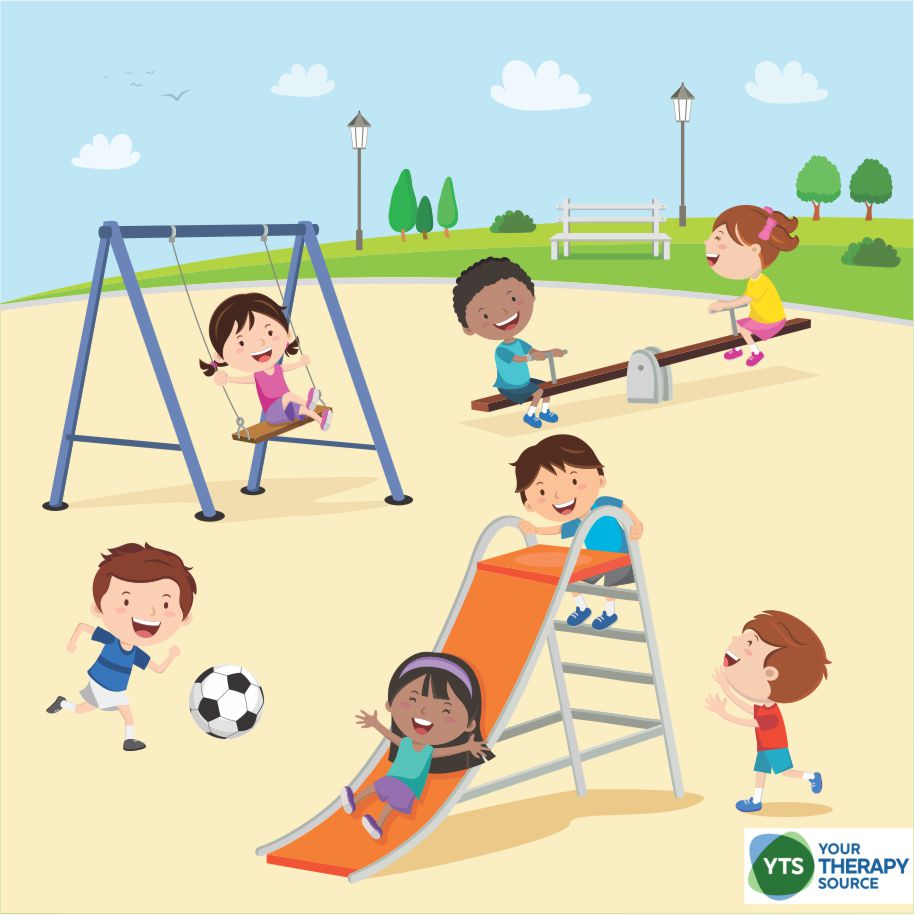Gross Motor Skills Autism

What does the research tell us about gross motor skills and autism? There has been quite a bit of research on the gross motor skill abilities of individuals with autism. A recent study took a closer look using a meta-analysis of the research to determine the motor skill abilities of individuals with autism and how this is associated with their social skills.
WHAT DOES THE RECENT RESEARCH SAY ABOUT GROSS MOTOR SKILLS AUTISM?
Gross motor ability is how well a person can move their arms, legs, and body. This is important because it affects how children experience and interact with the environment around them and people. A lot of research has been done on gross motor skills in autistic people, and it shows that they often have trouble with these skills.
Researchers do not yet know which physical skills are affected in autism spectrum disorder, when these differences first show up, and if there is a connection between social and physical impairments.
Two meta-analysis studies were done on this topic of gross motor skills and autism. The first meta-analysis investigated gross motor deficits in individuals with autism compared to neurotypical controls, using data from 114 studies representing 6,423 autistic and 2,941 neurotypical individuals. The results indicated the following:
- a significant overall deficit in gross motor skills in autism that was significant at every level of the tested researchers.
- this deficit was most pronounced for object control skills (i.e., ball skills), clinical assessment measures, and movements of the upper extremities or the whole body.
The second meta-analysis examined whether gross motor and social skills are related to autism. Data was included from 21 studies representing 654 autistic individuals. The findings showed that there is a small but significant connection between deficits in gross motor skills and deficits in social skills in people with autism spectrum disorder.
The researchers concluded that people with autism may have more trouble with movement skills than people without autism. This is true no matter how old the person is, whether they are a boy or girl, or how smart they are. Having trouble with movement skills was also moderately linked to having trouble with social skills for some people with autism (Wang et al, 2022).

Teaching Catching, Throwing and Kicking Skills
WHAT DOES PREVIOUS RESEARCH SAY ABOUT AUTISM AND GROSS MOTOR SKILLS?
There have been several smaller studies on children with autism and their gross motor abilities.
Gross Motor Skills and Autism in Children 5-10 Years Old
The Journal of Child & Adolescent Behavior published research comparing the gross motor skill performance on 21 children with autism spectrum disorder (ASD) and 21 age matched peers (5-10 years) using the Test of Gross Motor Development-2 (TGMD- 2).
The motor performance scores on the TGMD-2 were compared. The following results were recorded:
- For the locomotor subtest, 67% children with ASD received poor standard scores and 40% of scores were very poor.
- For object control skills, about 60% children with ASD had poor standard scores and 33% of scores were very poor.
- For overall gross motor quotient scores, 81% children with ASD were below 79 and classified as poor and about 76% children scored below 70 and received very poor rating.
- statistical analysis revealed significant performance difference between children with ASD and typically developing children.
The researchers concluded that regardless of how the children with ASD were classified there were delays in gross motor skill performance. This information is important in order to implement appropriate intervention programs that can effectively address the delayed object and locomotor skill performance in children with ASD (Liu, 2014).
Gross Motor Skills, Fine Motor Skills, and Social Skills in Children with Autism
Another meta-analysis study indicated relationships were seen between social skills, fine motor skills and gross motor skills in children with autism. More specifically the researchers reported that:
- three studies indicated that fine motor skills had a stronger relationship with social skills than did gross motor skills.
- when gross motor skills association with social skills were examined, object control skills seemed most closely linked to social skills.
- manual dexterity seemed to most closely related to social skills when fine motor skills were investigated.
The researchers concluded that these are preliminary results and further research is necessary to determine the overall relationship between social skills, gross motor skills, fine motor skills, and individuals with autism spectrum disorder (Ohara, 2020).
Gross Motor Skills, Social Skills, and Autism in Boys
Did you know that motor skills and social function are related in young boys with autism? Research indicated that stability and object manipulation skills predicted the most variance in overall social function in boys with autism. The researchers recommended additional studies to examine the potential social benefits from interventions to improve stability and object manipulation (Holloway et al, 2018).
Gross Motor Skills as a Core Deficit in Autism
Additional research was published in Autism regarding motor skill development in children with autism. The researchers studied 144 children from 67 families where at least one child had a diagnoses of autism. The Bruininks Oseretsky Test of Motor Proficiency, 2nd Edition, was performed on sibling pairs. The results indicated the following:
- the lower the score on the Bruininks the greater the degree of social impairment and severity of autism
- total motor composite scores were at least one standard deviation below the mean in 83% of the participants with autism
- only 6% of the unaffected siblings exhibited one standard deviation below the mean with regards to total composite score
- overall motor skills in siblings without autism were essentially normal
The researchers concluded that motor impairment constitutes a core characteristic of autism (Hilton et al, 2012).
Previous research also indicated that postural stability appears to influence the ability of children with autism to perform gross motor skills (Mache & Todd, 2016).
STRATEGIES TO HELP TEACH GROSS MOTOR SKILLS FOR CHILDREN WITH AUTISM
A recent review study in Physical and Occupational Therapy in Pediatrics examined studies that included participants with ASD ≤ 18 years old, evaluated learning of a novel gross motor task, manipulated a motor learning variable, and were written in English. Data analysis of 22 articles determined the following:
- the majority of articles examined strategies that manipulated the instruction of task.
- very few articles investigated feedback or practice.
- skill acquisition was the most represented motor learning outcome.
- some studies examined retention, transfer, or generalizability of gross motor skills.
The researchers concluded that the use of support strategies to optimize motor learning is beneficial for children with ASD. They recommended modifications to instruction, feedback, and practice schedules should be considered in motor interventions for children with autism (Holloway, Tomlinson & Hartwick, 2023).
USING MOTOR INTERVENTIONS TO HELP INDIVIDUALS WITH AUTISM
The researchers concluded that motor evaluations and interventions should be the standard of care for children with ASD. In addition, dyspraxia should be recognized as an important part of the definition of ASD. Read more here. (Kaur et al, 2018)
Another helpful intervention is yoga. Researchers have concluded that creative interventions, such as yoga for autism, are promising tools for enhancing the motor and imitation skills of children with ASD (Kaur & Bhat, 2019).
Read more on using exercise to help individuals with autism here.

Do you need help teaching children to catch, throw and kick? Teaching Catching, Throwing and Kicking Skills: Help children learn how to catch, throw and kick with this packet full of information of age progression of skills, visual picture cards, tips, letter to parents and more! FIND OUT MORE INFORMATION.
REFERENCES ON GROSS MOTOR SKILLS AND AUTISM
Holloway, J. M., Long, T. M., & Biasini, F. (2018). Relationships Between Gross Motor Skills and Social Function in Young Boys With Autism Spectrum Disorder. Pediatric Physical Therapy, 30(3), 184-190.
Holloway, J. M., Tomlinson, S. M., & Hardwick, D. D. (2023). Strategies to Support Learning of Gross Motor Tasks in Children with Autism Spectrum Disorder: A Scoping Review. Physical & Occupational Therapy In Pediatrics, 43(1), 17-33.
Hilton CL, Zhang Y, White, MR, Klohr CL, Constantino J. Motor impairment in sibling pairs concordant and discordant for autism spectrum disorders. Autism. Published Jan. 18, 2012. doi: 10.1177/1362361311423018
Kaur, M., & Bhat, A. (2019). Creative Yoga Intervention Improves Motor and Imitation Skills of Children With Autism Spectrum Disorder. Physical therapy, 99(11), 1520-1534.
Kaur, M., Srinivasan, S. M., & Bhat, A. N. (2018). Comparing motor performance, praxis, coordination, and interpersonal synchrony between children with and without Autism Spectrum Disorder (ASD). Research in developmental disabilities, 72, 79-95.
Liu T, Hamilton M, Davis L, ElGarhy S (2014) Gross Motor Performance by Children with Autism Spectrum Disorder and Typically Developing Children on TGMD-2. J Child Adolesc Behav 2: 123. doi:10.4172/jcalb.1000123
Mache, M. A., & Todd, T. A. (2016). Gross motor skills are related to postural stability and age in children with autism spectrum disorder. Research in Autism Spectrum Disorders, 23, 179-187.
Ohara, R., Kanejima, Y., Kitamura, M., & P Izawa, K. (2020). Association between Social Skills and Motor Skills in Individuals with Autism Spectrum Disorder: A Systematic Review. European Journal of Investigation in Health, Psychology and Education, 10(1), 276-296.
Wang, L. A. L., Petrulla, V., Zampella, C. J., Waller, R., & Schultz, R. T. (2022). Gross motor impairment and its relation to social skills in autism spectrum disorder: A systematic review and two meta-analyses. Psychological Bulletin, 148(3-4), 273–300. https://doi.org/10.1037/bul0000358
Read more about motor skills deficits and autism here.



